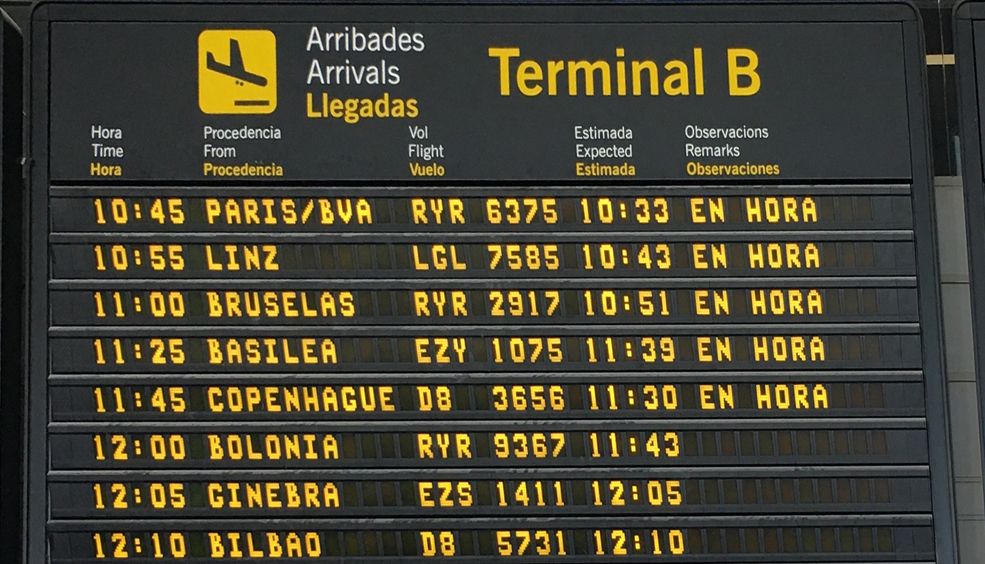Kinderland The Children’s Island
Mainau Island is a captivating green island carpeted with flowers emerging from the blue waters of Lake Constance, just an hour and a half away from Stuttgart. Standout features include a 45-hectare Mediterranean-style garden commissioned by Count Lennart Bernadotte who was related to the Swedish royal family. This gardening artwork is now managed by his children.
Mainau Children’s Land
Mainau Island (also known as the Island of Flowers) has some admirable features and not only those in its lush botanical gardens, with plants from all over the world. Mainau-Kinderland (Mainau Children’s Land) and Germany’s largest Butterfly House draw families from across the globe. Over two million people a year are estimated to visit here. The best thing about this huge children’s park is that it is suitable for children from the age of two years on, and it opens from spring to autumn.
But, what most rivets the little ones’ attention – and grown ups, too, we have to admit – is the Dwarf Village. This attraction is aimed at children between the ages of two and four. It has cave-shaped huts, a wooden train and an area for water games, which operates permanently. The Village is located between the Farm and the Lake and also features a stable for pony riding. There are also dwarf donkeys and dogs – loads of dogs, as virtually all the breeds are represented here. The Farm, which also has a garden, is full of rabbits running about, while cows and goats graze to their heart’s content. And, needless to say, there has to be a chicken run, too, with both roosters and hens crowing away. What child doesn’t like a farm?
One of the major attractions is the Zoo, where children are allowed to pet lots of animals. Perhaps the best part, though, is the Butterfly House, which is open all year around. Stretching across an area of 1,000 m², it is landscaped to resemble a tropical paradise. Strolling among the gurgling waterfalls, pond-straddling bridges and a grotto, visitors can luxuriate in the sight of hundreds of colours and rare butterflies from about 80 species flying freely and feeding, carrying out their mating dances and laying eggs. If you keep still for a while, you might be lucky enough to have one settle on you. Another highlight is the new Insect Garden where you can glean interesting facts about wild bees, honey bees and apiculture in general.
Caution! A Water World
The area which has been most successful of late is the Wasserwelt (Water World). It is an ideal precinct for children to play to their heart’s content in a safe environment. It is actually a game-show-like circuit with a set of small, attached or interconnected houses and towers where children are challenged to overcome hurdles and move from one house to the next without touching the ground. To this end, they avail themselves of ropes and climbing walkways. This water world also has large areas with sand built in the form of mud pools. Here, children can play unfettered – they can build, bake, discover and investigate. Alongside this area is a pathway where you can walk barefoot, made of materials which are pleasant to the touch, purposely devised for adults who are loathe to get splashed while accompanying their kids.
Lake Constance
Lake Constance, nicknamed the Schwäbische Meer (Swabian Sea), is the third largest lake in Europe and straddles three countries – Germany, Austria and Switzerland. Be sure to take advantage of your trip to Mainau Kinderland to tour this marvellous landscape. Formed by the Rhine glacier during the last Ice Age and currently fed by the river itself, this enormous lake is 63 km long by 14 km wide and has a maximum depth of 250 metres. The region is characterised by meadows and vineyards, market gardens and dams, beaches and Alpine foothills. A motley region which blossoms into its full beauty in summer, just when the tourists flock here. Some of the most popular activities here are swimming in the lake and camping on some of its shores. In spring it is carpeted with flowers and in autumn there is new wine, fewer people and magnificent visibility when the warm Föhn blows.
Don’t pass up the chance to treat your children to this cultural extravaganza. The area also features countless Baroque churches, Benedictine abbeys, Stone Age dwellings, Roman forts, medieval castles and even zeppelins. You just can’t get bored. Come on – prepare your children for the grand surprise. Check out our flights here.
Text by Los Viajes de ISABELYLUIS
Images by Germany Travel
more infoCuriosities in Malaga
1- El Caminito del Rey (King’s little road)
Known by fans of extreme sports for being one of the most dangerous roads in the world . It is a 3-kilometer pedestrian walkway with sections just 1 meter wide that gets to hang up to 100 meters above the river and is located between the villages of Alora and Ardales. King Alfonso XIII had to cross it in 1921 to inaugurate the prey to Conde del Guadalhorce, hence the name.
2- Júzcar. El Pueblo Pitufo (Júzcar. Smurf’s Village)
Only from that grace so typical of Malaga can be understood that an idea like this was born. Taking advantage of the promotion of Smurfs 3D movie , the village was painted blue and, after a popular consultation, it was agreed to extend the painting of the facades. The town of Juzcar became the first Smurf Village in the World on June 16, 2011. Thanks to the original proposal, it has become a leading destination for family holidays.
3- El Castillo de Colomares
This strange construction, which pays tribute to Columbus and the Discovery of America, is located in Benalmadena and is a compendium of architectural styles as diverse as Moorish, Romanesque and Gothic, that give the monument an air somewhat bizarre .
On the inside you can visit which is considered by the Guinness Book of Records as the smallest chapel in the world , with just 1’96 square meters. On the few occasions on which Mass is celebrated in the chapel, Christian believers should listen from outside.
4- Frigiliana
Of Frigiliana is said to be one of the most beautiful and best preserved villages in Spain . With just 3,000 inhabitants, is situated in the eastern part of Malaga’s province, between the Sierra de Almijara and the Mediterranean Sea. Its streets of medieval-Moorish style’s architecture and its old town has been awarded prizes such as the Improvement and Embellishment of Towns of the Province, the Beautification of the people of Spain or the First Prize of National Award Competition improvement and Embellishment of Towns of Andalusia.
5- Santa Teresa de Jesús’s incorrupt hand
There is another curiosity in the beautiful town of Ronda. Its Iglesia de la Merced maintains what they callSanta Teresa de Jesus’s incorrupt hand. About ten months after the saint’s death , in 1582, her remains were exhumed, and the Catholic Church claims that her body was found incorrupt. Now this relic has being protected by a gilded silver glove embedded with precious stones.
6- La Casa de los Navajas (Navajas House)
Facing the beach El Bajondillo in Torremolinos, this beautiful Neomudejar style building has survived property speculation. The simple fact of surviving Costa del Sol’s fierce land speculation, is in itself something extraordinary. It is also one of the most beautiful and emblematic places with interior decor inspired by the Alhambra in Granada. The house was declared a Historic Landmark by the Department of Culture of the Junta de Andalucía in 1991.
7.- How to order a coffee in Málaga
This video comes to be a useful guide in how to order coffee in Malaga, with the measurements invented by the Central Cafe Malaga. There are 10 different ways to ask for it and many visitors might wonder where their nomenclature comes. Began in 1954 in postwar times, when coffee was more expensive. The owner of the Café Central, José Crespo Prado had to choose between throwing coffee or do another again, to suit all tastes. To avoid wasting coffee, identified 10 possible amounts of coffee and named them, so you always have a measure that would suit your tastes.
8- Málaga, cinema city
Finally, some interesting facts related to the movies. For example, the final scene of the movie “Milennium. Men Who Hate Women”, in which Lisbeth leave the car with a briefcase, was shot in the Malagueta beach, on the Paseo Marítimo Pablo Picasso. Apparently, this area showed perfectly the idea that its director, Niels Arden Oplev, was to represent the Cayman Islands.
In Málaga, movies like Michelangelo Antonioni’s The Passenger , starring Jack Nicholson and Maria Schneider, Jacques Feyder’s Carmen that starred Raquel Meller or San Luis Rey’s Bridge , starring Robert Of Niro and Geraldine Chaplin
The most common scenario for shooting was Finca de la Concepción because of the lush botanical garden that reminds exotic countries such as Cuba, the Philippines and India. Here was filmed, for example, The latest of the Philippines or the Adventures of Barber of Seville.
Why not take a trip to Málaga? Have a look at our flights here!
more info
What colour are aeroplanes painted?
Although planes are usually emblazoned with the airline colours and logo, it is hard to stand out from the competition because the main colour they all use is usually white. Planes are actually green when they come out of the factory, because of an anticorrosion layer that is applied to the fuselage. So why do so many airlines paint their planes white?
more infoIATA code: 3 letters so you don't get lost
BCN, CDG, VIE, LGW.... All frequent flyers (and regular players of Trivial Pursuit) know what these three letters mean. They are IATA codes, in other words, the three letters that identify every single airport in the world.
more info




